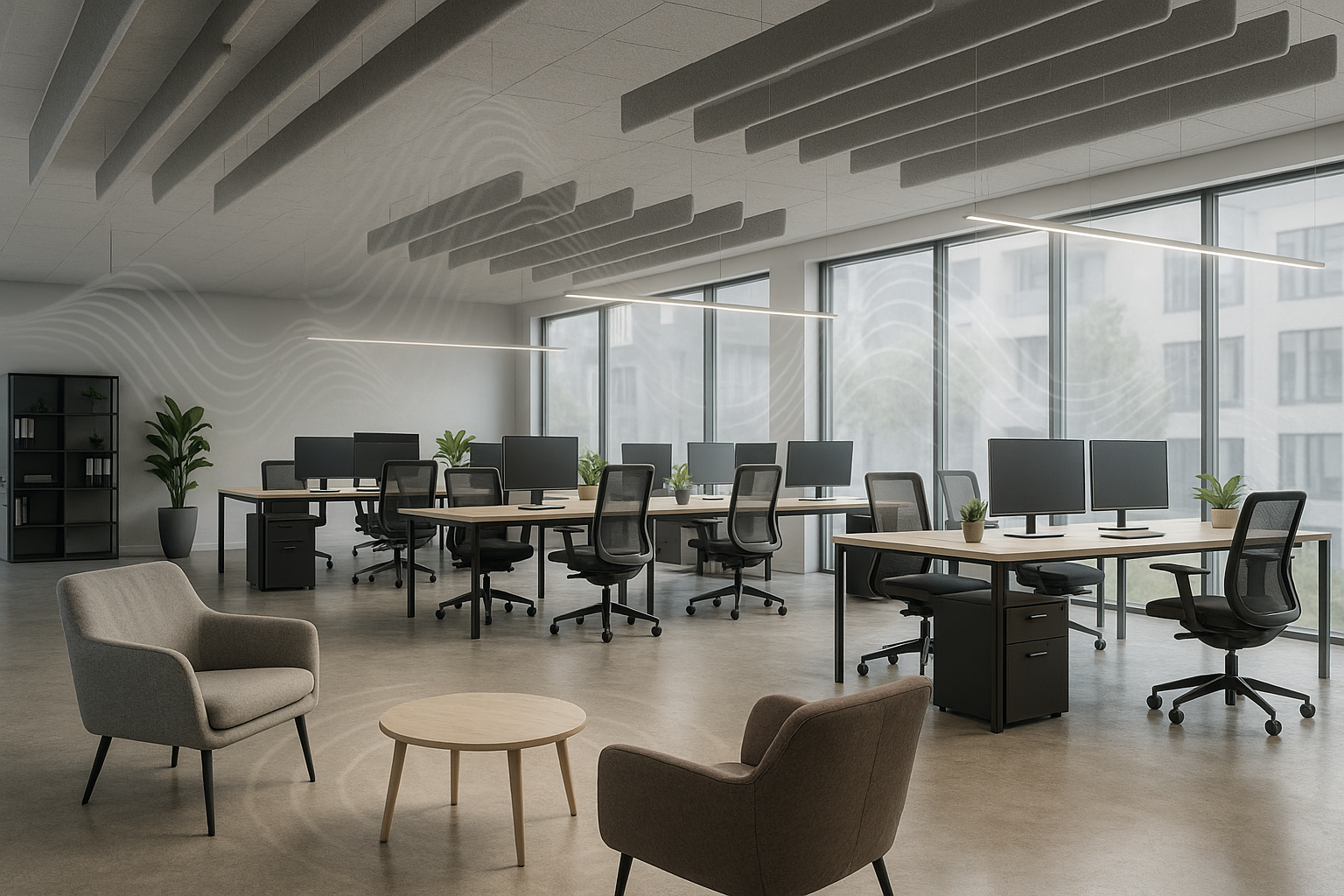Why Flooring Matters for Acoustics
Hard flooring surfaces like tile, VCT, or untreated concrete often amplify noise, making rooms feel louder. This can create:
- Distraction in open-plan offices
- Communication issues in classrooms or healthcare settings
- Poor guest experience in restaurants and retail spaces
Acoustic performance is measured by NRC (Noise Reduction Coefficient) and STC (Sound Transmission Class) ratings. While floors aren’t the only factor, they play a surprisingly big role.
How Polished Concrete and Epoxy Fit In
Both polished concrete and epoxy have naturally reflective sound profiles—but they can be customized to support better acoustics:
Polished Concrete
- Matte finish reduces echo compared to untreated slabs
- Can be paired with area rugs or sound-absorbing panels to balance reflection
- Extremely durable, making it ideal for classrooms, lobbies, and corridors
Epoxy Flooring
- Can be installed with elastomeric underlayment to dampen sound
- Perfect for multi-story buildings needing STC compliance
- Seamless surface keeps sound transmission consistent across the space
Industries That Benefit from Acoustic Planning
- Corporate Offices – Reduce distractions in open layouts
- Education – Improve clarity in classrooms and lecture halls
- Healthcare – Minimize noise to support healing environments
- Hospitality – Control echo for better guest experience
- Entertainment Venues – Maintain consistent sound quality
Pairing Flooring with Other Acoustic Solutions
The best results come from layered acoustic strategies:
- Add ceiling baffles or wall panels for sound absorption
- Use furniture placement to break up reflections
- Choose sealers and coatings with the right sheen level to reduce harsh echoes
Ready to Build a Better-Sounding Space?
Call 877-CSTM-FLR
Email carolina@cstmflr.com
Visitwww.cstmflr.com
Let’s make your facility sound as good as it looks.


.png)
